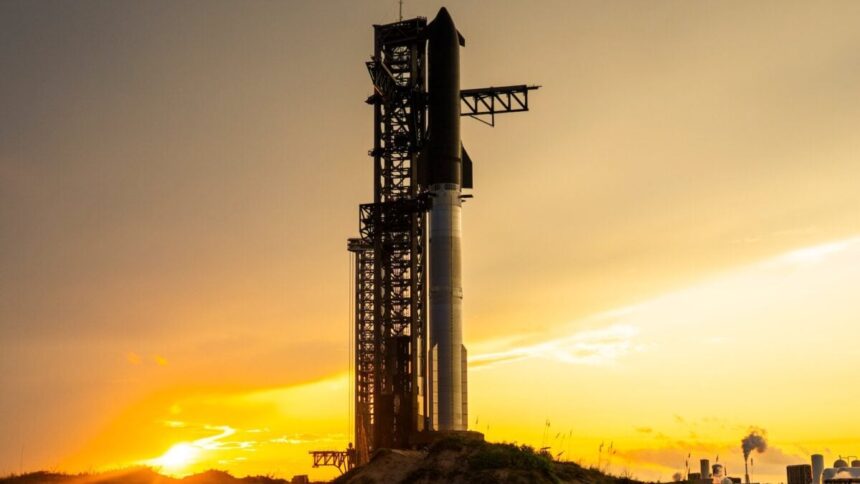After back-to-back scrubs, SpaceX is aiming to launch its Starship rocket on Tuesday and hoping to finally break a streak of failed test flights.
SpaceX’s Starship is set for liftoff during a launch window that opens at 7:30 p.m. ET on Tuesday, August 26. The rocket was originally scheduled to fly this past Sunday, but the launch was delayed twice, further building anticipation for Starship’s chance to redeem itself and achieve its mission objectives after three less-than-ideal flights this year.
Watch Starship’s tenth flight test → https://t.co/UIwbeGoo2B https://t.co/BFrpQPQFUw
— SpaceX (@SpaceX) August 26, 2025
The launch will be streamed live on SpaceX’s website, as well as the company’s account on X (available above). You can also tune in through the third-party live feeds below.
Sunday’s launch was called off minutes before its scheduled liftoff “to allow time to troubleshoot an issue with ground systems,” the company explained over X. SpaceX attempted to launch Starship on Monday as well, but its rocket’s test flight was delayed due to unfavorable weather.
On a bit of losing streak
There’s a lot hanging on Starship’s upcoming flight as the company races to prove that its megarocket can fly a mission to Mars in 2026. The Federal Aviation Administration (FAA) granted SpaceX the green light for Starship’s upcoming flight after concluding the investigation into Flight 9, which took place on May 27 and ended with the vehicle breaking apart during reentry. For Tuesday’s launch, SpaceX has integrated hardware and operational changes into its rocket to avoid any more mishaps.
Following an impressive demonstration of Starship’s reusability last year, the rocket has struggled to meet its mission objectives, enduring a string of failed flights that began in January.
The rocket’s seventh test flight ended with Starship’s upper stage exploding roughly eight-and-a-half minutes after launch. Starship’s upper stage met a similar fate during its eighth test flight in March when six of its nine Raptor engines died during the ascent burn. For its most recent flight, SpaceX traced the anomaly to damage to a composite overwrapped pressure vessel (COPV), which stores nitrogen in Starship’s payload bay. In order to address the issue ahead of Tuesday’s launch, the rocket’s COPV will operate at a reduced pressure.
The upcoming flight will also attempt similar mission objectives to the previous ones, namely attempting to deploy 10 Starlink simulators, each similar in size and weight to the company’s next-generation satellites. Rather than remaining in orbit, these Starlinks are designed to follow a suborbital trajectory and are expected to burn up during reentry.
Mechazilla not needed
Sadly, SpaceX will not attempt to catch Starship’s Super Heavy booster at the launch mount. Instead, the booster will head on a trajectory to an offshore landing point in the Gulf of Mexico to test its landing burn.
During the descent, one of the booster’s three engines will shut down to test the ability of a backup engine to take over. The booster will then use two center engines for the final landing burn, hovering briefly above the ocean before dropping into the Gulf of Mexico.
The company has also removed several tiles from the upper stage’s heat shield to test vulnerable areas during its reentry. The tiles were removed from hot spots that were observed during Starship’s sixth flight test.
Although SpaceX will not attempt to stick the landing this time, the company is at least hoping its rocket doesn’t get blown to bits during this coming launch.
Read the full article here












